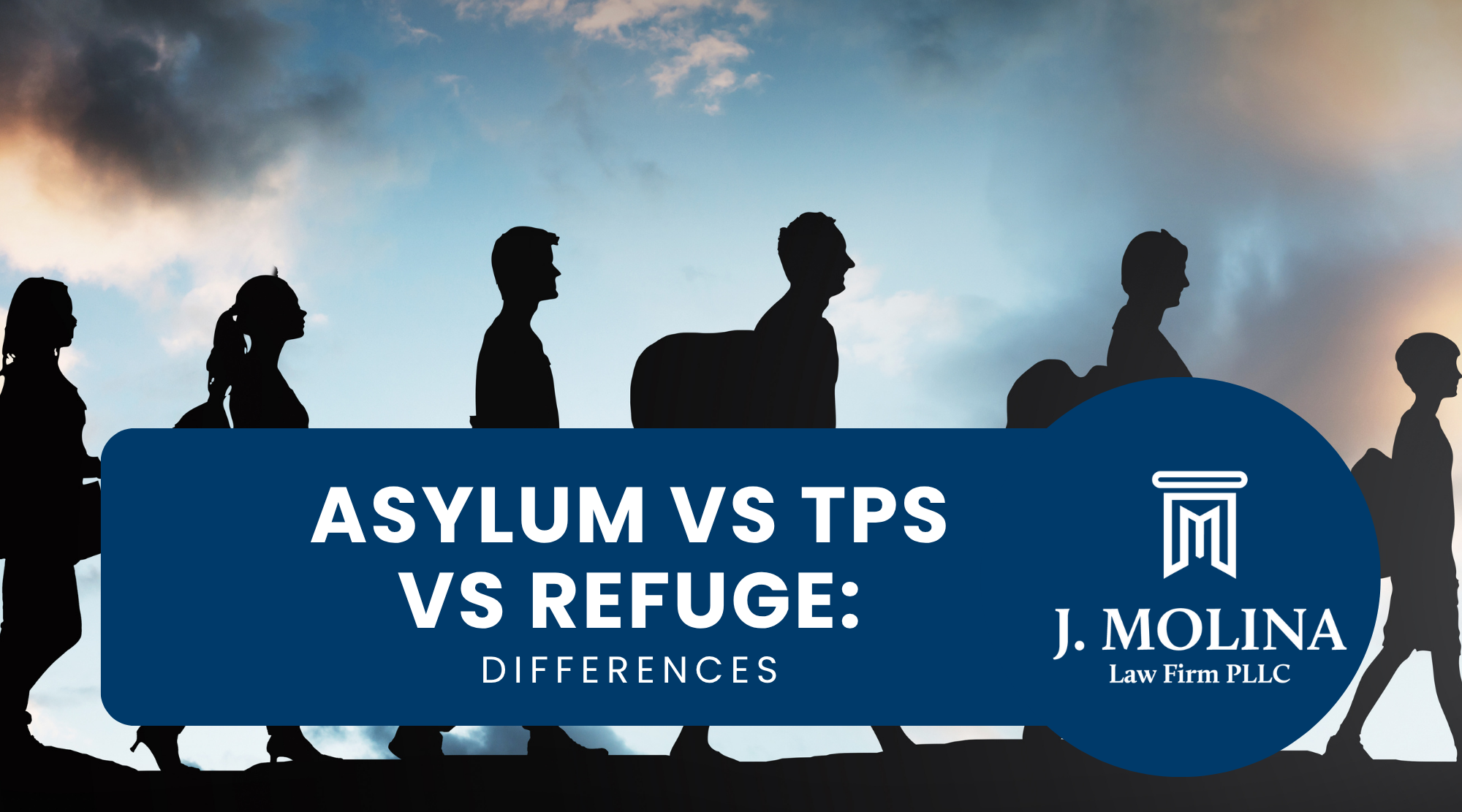Why Is It Important to Understand the Differences Between Asylum, TPS, and Refugee Status?
If you’re seeking protection in the United States because it’s unsafe to return to your home country, it’s essential to understand your legal options. The most common humanitarian protections are Asylum, Temporary Protected Status (TPS), and Refugee Status. While they all provide some level of protection, they differ significantly in eligibility, process, and long-term benefits.
In this blog, we explain in clear and simple terms the key differences between asylum, TPS, and refugee status, so you can better understand which option may apply to your situation.
Asylum: For Those Already in the U.S. or at the Border
Asylum is for people who are already inside the United States or arriving at a port of entry. To qualify, you must prove that you fear persecution in your home country due to your race, religion, nationality, political opinion, or membership in a particular social group.
Benefits of asylum:
- You can apply for a work permit while your case is pending.
- After one year of granted asylum, you can apply for a green card.
- Eventually, you can become a U.S. citizen.
While the asylum process can take time, it offers a clear pathway to legal permanent residency and family reunification.
TPS: Temporary Protection Due to Crisis in Your Country
Temporary Protected Status (TPS) is granted to individuals from specific countries facing extreme situations like war, natural disasters, or epidemics. To qualify, you must already be physically present in the U.S. when your country is designated for TPS.
Key features of TPS:
- No need to prove personal persecution.
- Allows legal work during the time TPS is in effect.
- Does not provide a direct path to permanent residency.
Though TPS is temporary, many recipients explore other immigration options—such as asylum or family petitions—if eligible.
Refugee Status: For Those Applying From Outside the U.S.
Refugee status is for people who are still outside the United States and cannot return to their country because of a well-founded fear of persecution. The process typically begins through a referral by the United Nations (UNHCR) or a U.S. embassy.
Benefits of refugee status:
- Legal entry into the U.S. with humanitarian protection.
- Eligible to apply for a green card after one year.
- Automatically authorized to work in the U.S.
This option is often essential for displaced individuals or families unable to reach U.S. soil but still in urgent need of protection.
Which Option Is Right for You?
The differences between asylum, TPS, and refugee status go beyond location. They affect your ability to remain in the U.S., work legally, and eventually become a permanent resident or citizen. Each case is unique, so having the right legal guidance is critical to choosing the right path.
Need Help with Your Immigration Case?
At J. Molina Law Firm, we’re committed to helping immigrants navigate complex immigration systems with compassion and precision. Whether you’re considering asylum, TPS, or refugee status, we’re here to guide you every step of the way.
Contact us today for a personalized consultation. Your future in the U.S. deserves strong and trusted legal support.



